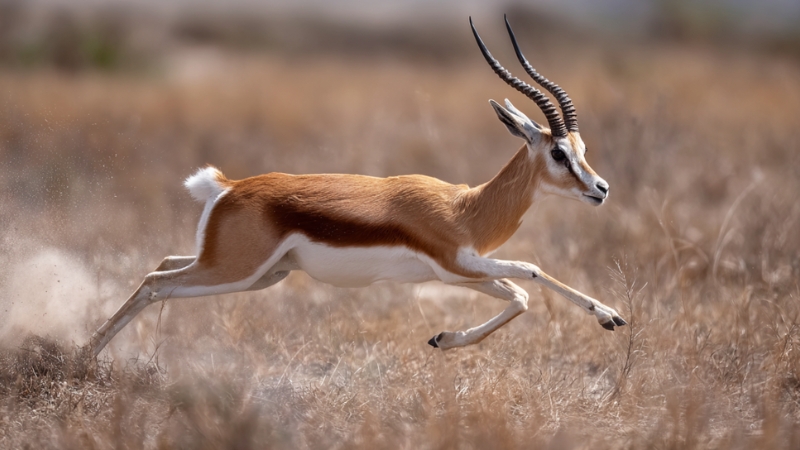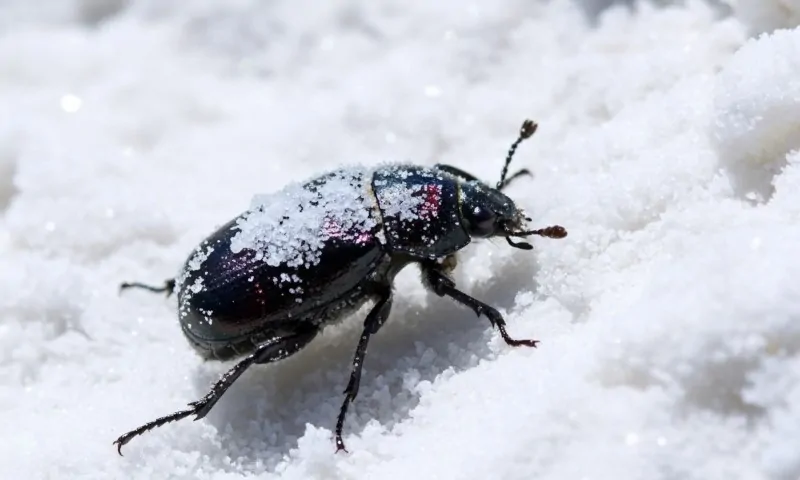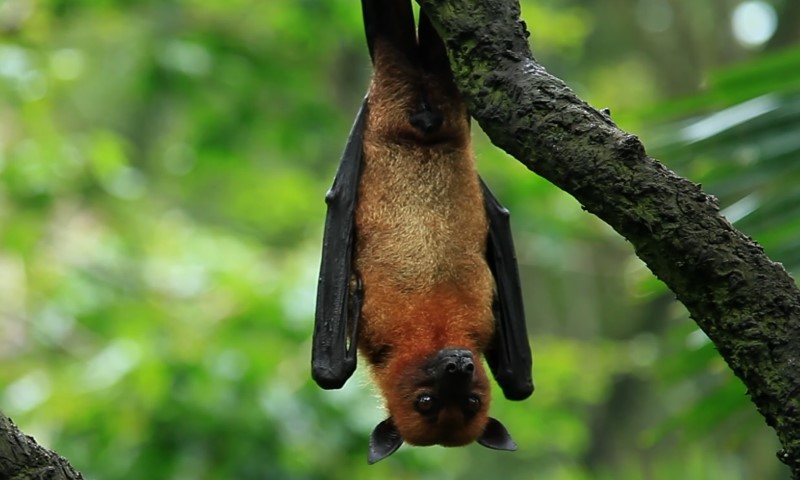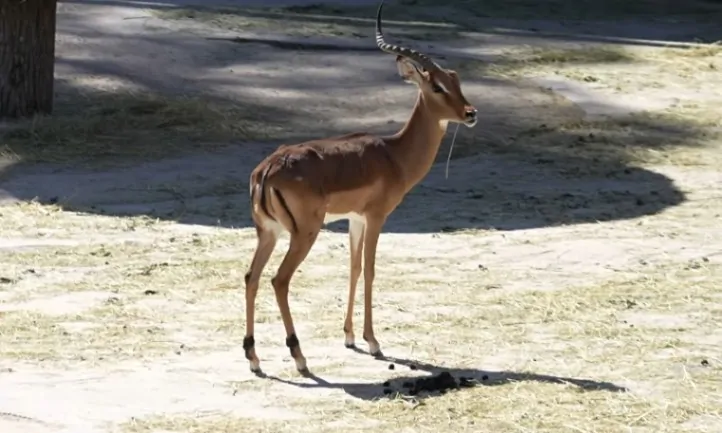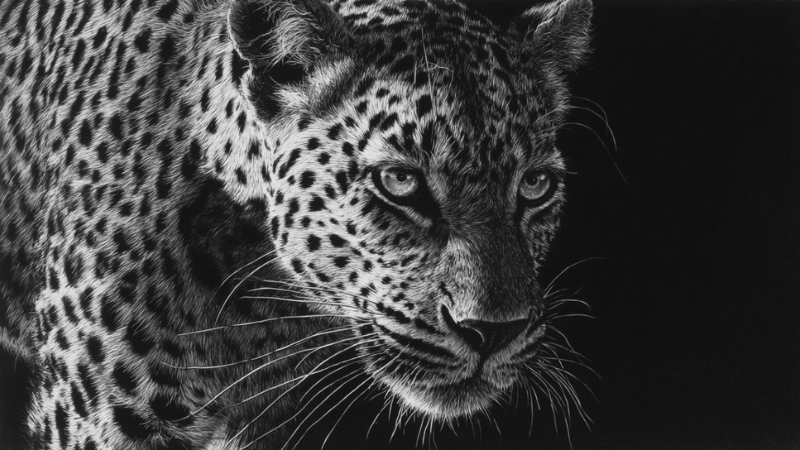If you’ve ever watched a wildlife documentary and seen a gazelle sprint away from a cheetah, you’ve probably wondered: just how fast are these animals really? The answer isn’t just impressive, it’s record-breaking.
Gazelles can reach top speeds of 80–100 kilometers per hour (50–62 miles per hour), putting them among the fastest land mammals on Earth. But speed is only half the story.
What makes a gazelle remarkable is how efficiently it uses that speed, balancing agility, endurance, and precision in a way few animals can match.
Table of Contents
Toggle1. Gazelles Can Hit 100 km/h, But Only for Seconds
Gazelles are capable of burst speeds up to 100 km/h (62 mph), depending on the species. The Thomson’s gazelle (Eudorcas thomsonii) is especially fast, averaging 80–90 km/h, while the Grant’s gazelle (Nanger granti) can occasionally reach the 100 mark in short bursts.
However, these bursts last no more than 15–20 seconds. Gazelles rely on a combination of sprinting and evasive maneuvering rather than prolonged speed, a skill that allows them to dodge predators like cheetahs, who tire quickly after a 300–400 meter chase.
Species
Top Speed (km/h)
Sustained Speed (km/h)
Typical Predator
Thomson’s Gazelle
80–90
60–70 for 2 minutes
Cheetah
Grant’s Gazelle
90–100
65–70 for 1.5 minutes
Lion, Leopard
Dorcas Gazelle
80
60 for 2–3 minutes
Caracal, Hyena
2. Their Acceleration Rivals a Sports Car
From a standstill, a gazelle can accelerate to 80 km/h in under 4 seconds, comparable to a Ferrari F430 in short-distance sprinting terms. This incredible acceleration comes from high-twitch muscle fibers and long, elastic tendons that store and release energy like springs.
Each leap can cover 5–6 meters horizontally, helping the animal gain speed with fewer strides. The rear legs provide the explosive force, while the front legs stabilize during mid-air repositioning.
3. Stotting Is More Than Just Showing Off
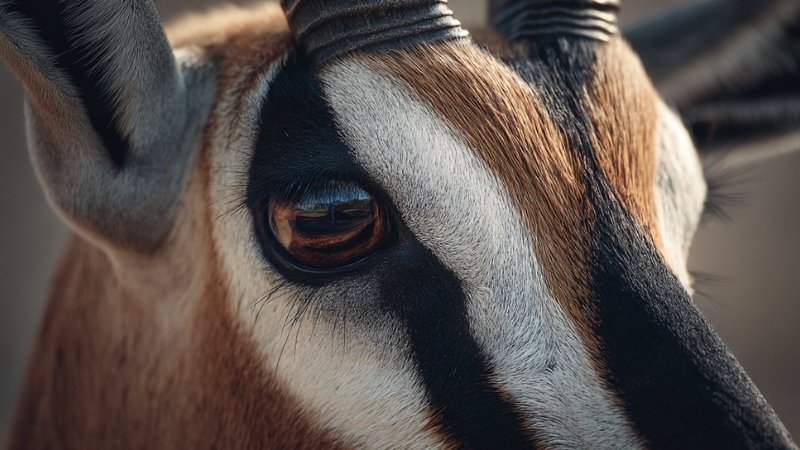
Gazelles often display a curious behavior called stotting (or pronking), a high, stiff-legged jump performed when spotting a predator. While it looks like wasted energy, it’s actually a tactical signal. Scientists believe stotting communicates two things:
- The gazelle has seen the predator (no element of surprise).
- It’s fit enough to escape discouraging pursuit.
This psychological display can end a hunt before it begins, saving the gazelle more energy than running full tilt.
4. Their Heart and Lung Capacity Are Oversized for Their Body
Gazelles have an enlarged heart and lung system relative to their body size, ensuring oxygen reaches muscles even under extreme exertion. Their blood has a higher hemoglobin concentration, and their respiratory rate can spike from 20 to over 200 breaths per minute during a chase.
These adaptations allow their muscles to maintain aerobic metabolism longer, delaying the point where lactic acid buildup forces them to slow down. That’s why even though a cheetah is faster, the gazelle can outlast it in most cases.
5. Their Tendons Work Like Elastic Power Cables
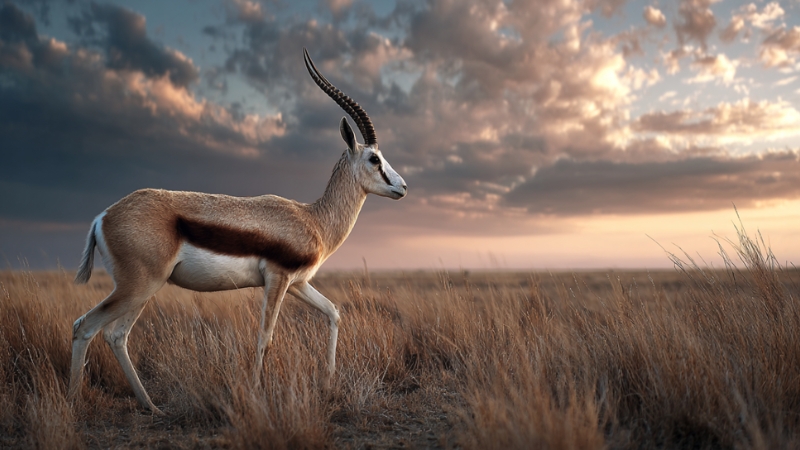
A gazelle’s Achilles tendon and digital flexor tendons act as biological shock absorbers and energy return systems. When a leg hits the ground, the tendon stretches and stores kinetic energy, which then powers the next stride.
This process improves mechanical efficiency by up to 30%, meaning the gazelle uses less energy to maintain high speed compared to animals of similar mass. It’s one of the best examples of natural biomechanics found in mammals.
6. They Don’t Run in Straight Lines
Unlike cheetahs, which pursue in straight bursts, gazelles use zigzag maneuvers. This constant change of direction reduces a predator’s accuracy and forces it to waste energy.
Gazelles can make directional changes of up to 90 degrees at full speed without losing balance, thanks to flexible ankle joints and a low center of gravity. This agility makes them nearly impossible to catch in open terrain after the first few seconds of pursuit.
7. Their Eyes Give Them a 320° Field of Vision
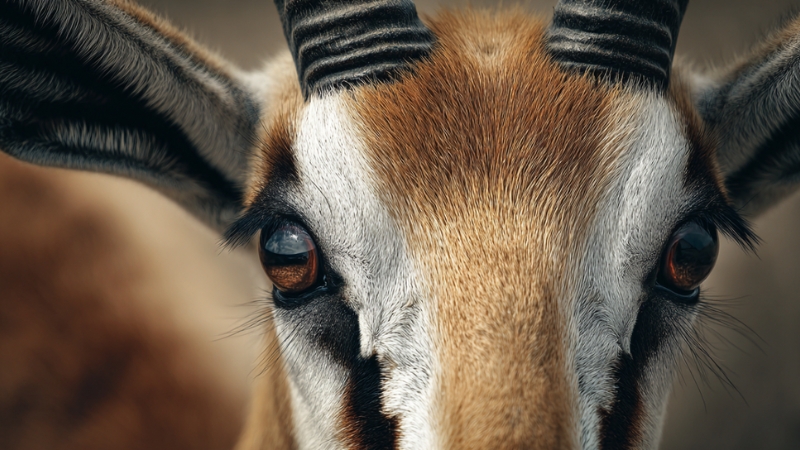
A gazelle’s wide-set eyes are positioned to cover almost the entire surrounding area without moving its head. This panoramic view allows early predator detection and quick terrain assessment during flight.
Unlike predators, which have binocular vision focused on depth, gazelles rely on motion detection and contrast sensitivity to track danger, even under the shimmering heat haze of the savannah.
8. Heat Management Is Key to Survival
Running at 100 km/h generates enormous body heat. Yet gazelles rarely suffer from overheating thanks to a rete mirabile, a specialized network of blood vessels near the brain.
This system cools arterial blood before it reaches the brain, keeping critical organs at safe temperatures even when body temperature climbs to 43°C (109°F).
This adaptation allows them to keep sprinting under intense sun conditions that would cripple most mammals.
9. Their Speed Is Partly a Product of Evolutionary Arms Races
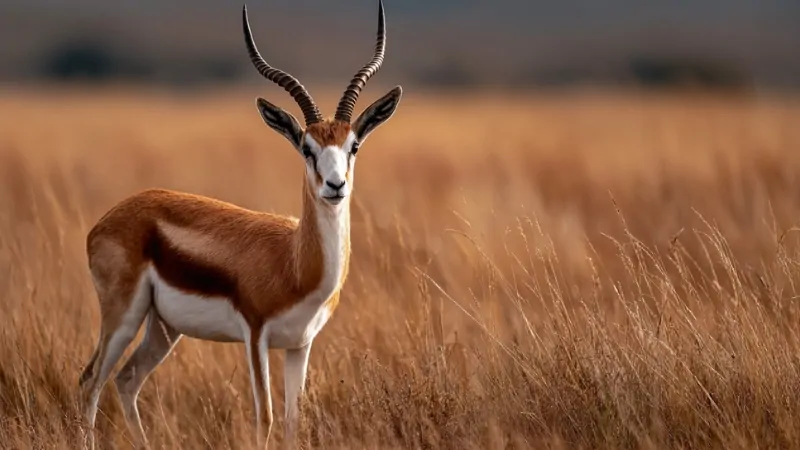
The gazelle’s evolutionary history is deeply intertwined with that of its predators. As cheetahs evolved to become faster hunters, gazelles evolved to become more agile and enduring.
Over thousands of years, this coevolution led to today’s near-perfect balance of offense and defense, each adaptation in one species pushing the other to improve.
Predator
Max Speed (km/h)
Typical Chase Duration
Success Rate
Cheetah
110–120
20 seconds
~40%
Leopard
60
30 seconds
~25%
Lion
80
10–15 seconds
~30%
Gazelle
80–100
60–120 seconds endurance
Survives 60–70% of pursuits
10. They’re Endurance Masters, Not Just Sprinters
While most people think of gazelles as short-distance runners, they’re surprisingly good at maintaining medium-speed endurance runs. Studies in East Africa show that Thomson’s gazelles can sustain 50–60 km/h over several kilometers, far longer than cheetahs or lions.
This endurance lets them migrate seasonally across 100–300 kilometers, following rainfall and grass growth patterns, often outrunning entire predator territories.
Bonus Fact: Gazelle Speed Inspired Modern Robotics
Researchers at the University of Michigan and MIT have modeled robotic limb systems based on gazelle tendon mechanics.
These systems use elastic energy storage similar to biological tendons, resulting in more efficient running robots that waste less power per stride. The gazelle, in other words, isn’t just fast; it’s influencing future tech.
Related Posts:
- Why Do Dogs Love to Roll in Smelly Things? 7 Things…
- 7 Things to Know Before Visiting Mount Nemrut
- 10 Biggest Spiders In The World You Need To Know About
- Antilles Pinktoe Tarantula Care Guide – Everything…
- 10 Oldest Trees in the World You Must Know About in 2025
- How Fast Can a Camel Run? Which One is Faster?

